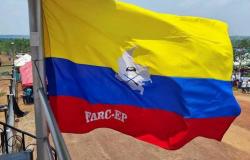He Cyclone Yaku it has generated river overflows and floods in different areas of northern Peru, including Tumbes, Piura, Lambayeque and La Libertad. The authorities of the National Service of Meteorology and Hydrology of Peru (Senami) They have announced that the cyclone is moving towards the south of the country, although its intensity as a cyclone will decrease. The president of Senamhi, Guillermo Antonio Baigorria Paz, explained that the effects of the cyclone will still be present until March 16.
He Cyclone Yaku it moves off the coast of La Libertad and Áncash and it is expected that in the coming days it will contribute to the increase in humidity in Lima and intensify the rains in these regions. Benito Valderrama, specialist in meteorology of the senamhihas explained that Yaku It will cause greater humidity and, consequently, “rain could occur in the coastal region of Ancash and Lima.”
He Cyclone Yaku It has affected several districts of Lima, including Ate, Santa Anita, Chaclacayo, Lurigancho, La Molina, Cieneguilla, San Luis, San Juan de Lurigancho, Chosica, and El Agustino. Local authorities have been working to mitigate the effects of the cyclone and provide aid to those affected.
He senamhi has reported that it is expected that heavy rains continue until March 14 and that there is an increase in Lima. Baigorria explained that the anomalous warming of the ocean, near the regions of Piura and Tumbes, was recorded six weeks ago and that Cyclone Yaku would have already been present in these areas. He has also specified that by Wednesday, March 15, the Cyclone Yaku It will already be moving away or disappearing from the Peruvian coast.
The city of Lima, capital of Peru, is known for its arid and sunny climate, with little rainfall throughout the year. However, when precipitation occurs, it can cause chaos and inconvenience in the city.
On average, the city of Lima receives less than 10 millimeters of rain per year, which makes it one of the driest cities in the world. However, sometimes, there are heavy rains that can cause river overflows, flooding and property damage.
According to the records of the National Service of Meteorology and Hydrology of Peru (Senamhi), in recent years there have been intense rains in the city of Lima on several occasions.
In March 2017, Lima was affected by a climatic phenomenon known as the “Coastal Child”, which generated torrential rains and flooding in various areas of the city. The intensity of the rains was such that it exceeded the historical records of rainfall in the city of Lima in the last 50 years.
In February 2020, The Peruvian capital experienced heavy rain that left streets flooded and vehicles stranded. Despite the fact that the rain was not as heavy as in the “Niño costero” of 2017, it caused chaos in the city and evidenced the lack of adequate drainage infrastructure.
This year, in March 2023Lima has once again been affected by intense rains generated by the Cyclone Yaku. Although the rains have not been torrential, they have generated chaos in the city and affected various areas.
The presence of rains in the city of Lima has evidenced the need for adequate planning and risk management in the face of climatic phenomena. It is essential that local and national authorities work on the implementation of adequate drainage infrastructures and on the generation of contingency plans to deal with emergency situations.
In conclusion, although Lima is known for its arid and sunny climate, the presence of heavy rains In recent years, it has shown the need for adequate planning and risk management in the face of climatic phenomena. It is critical that steps are taken to improve drainage infrastructure and emergency response capacity.
He senamhi reports that between Wednesday, March 15 and Friday, March 17, there will be rainfall (snow, hail, sleet and rain) of moderate to extreme intensity on the coast and mountains. These precipitations will be accompanied by electrical discharges and gusts of wind with speeds close to 35 km/h. In addition, localized hail is expected to occur in areas above 2,800 meters above sea level and isolated snow in locations above 4,000 meters above sea level.
On Wednesday, March 15, cumulatives of rain with values close to 40 mm/day in the northern sierra, around 20 mm/day in the central sierra and values above 15 mm/day in the southern sierra. In addition, on the coast, records of over 30 mm/day are expected in Tumbes and Piura, close to 20 mm/day in Lambayeque and La Libertad, over 4 mm/day in Áncash, close to 2 mm/day. in Lima and in districts far from the Ica coast, accumulations of over 6 mm/day would be expected.
Patrick Valderramageneral manager Geológica Consultores, stated on his social networks that “Cyclone Yaku will not reach Lima”.
“In fact, it is getting further and further away from Lima. Right now it is 1,200km from Lima, by 9pm it will be 1,500km away,” he revealed.
He also indicated that “tonight rain is expected in Lima. It doesn’t seem like it was strong, but it will happen. In the districts close to the hills something of 3mm is expected and in the coastal districts less than 2mm”.
Valderrama reiterated that “at this time ‘yaku’ It is located 800km off the coast of Trujillo. Yesterday it was 600 km. The trend is that by Wednesday it will be 1,500 km away.”
“The rains are not a consequence of YakuThey are due to the warming of the sea and this will last until April,” he stressed.
While, Benito Valderrama, Senamhi meteorologistsaid that the displacement of Cyclone Yaku “will cause greater humidity and “rain could occur in Ancash and Lima.”
The Senamhi meteorologist, raquel loayzastated today that the Cyclone Yaku It is heading west, that is, entering the Pacific Ocean, moving away from the Peruvian coast.
However, Loayza explained that this departure from Cyclone Yaku It is still leaving great humidity, cloud cover and torrential rains in the north of the country.
Senamhi shows the route taken by Cyclone Yaku since its appearance in the Peruvian sea
Despite the passage of Cyclone Yaku is moving away from the Peruvian coast, the danger is latent not only in Lima, but also in the north of the country. Patricio Valderrama, former director of Senamhi, stated on his social networks that there will be “heavy rains with storms in Piura, Lambayeque, Cajamarca, La Libertad and Ancash. Without a doubt they will bring more affectation to the population and infrastructure. The emergency is in the north”.
A tropical cyclone It is an atmospheric system whose wind circulates in a cyclonic direction, that is, counterclockwise in the northern hemisphere, and clockwise in the southern hemisphere.
Some of the effects of tropical cyclones are:
- Heavy rainfall: in their path they generate an increase in the level of the rivers that can cause their overflow and, therefore, floods occur in low-lying or plain areas.
- High waves and storm surge: they cause penetrations of the sea that result in coastal flooding.
- Strong winds: the wind that accompanies them can knock down electric power poles, trees and billboards, which obstruct roads and, on some occasions, these winds come to detach the roof of the houses.
The risks associated with the tropical cyclonesespecially with hurricanes are: storm surge, strong winds, heavy rainfall, landslides and floods.
Before the arrival of a tropical cyclone reduce risks:
- Make the necessary repairs to roofs, windows, and walls to prevent further damage, and clean roofs, drains, and drains.
- Seal the well cap with cement mix to have uncontaminated reserve water.
- Trim trees and shrubs around your house, as they can fall over.
- Secure detected objects that could be thrown during a hurricane, such as: television antennas, signs or hanging objects.
- Avoid contact with poles and electric power cables.
The National Service of Meteorology and Hydrology of Peru (senamhi) reports that the coast of Peru It will continue registering the increase in maximum temperatures until Thursday, March 16, reaching values of up to 3°C.
specialists of senamhi they detailed that in tacna Values between 27°C and 30°C are expected in the areas close to the coast and values between 28°C and 31°C for the most remote districts. In addition, records of up to 34°C are expected in Moquegua, between 28°C and 29°C on the coast of Arequipa and temperatures between 28°C and 33°C in coastal valleys.
In Lima, daytime temperatures will be between 28°C and 32°C, in ancash values between 30°C and 34°C are expected. In Ica, values between 33 and 35°C are expected for areas far from the coast and values between 29 and 31°C in areas close to the coast.






